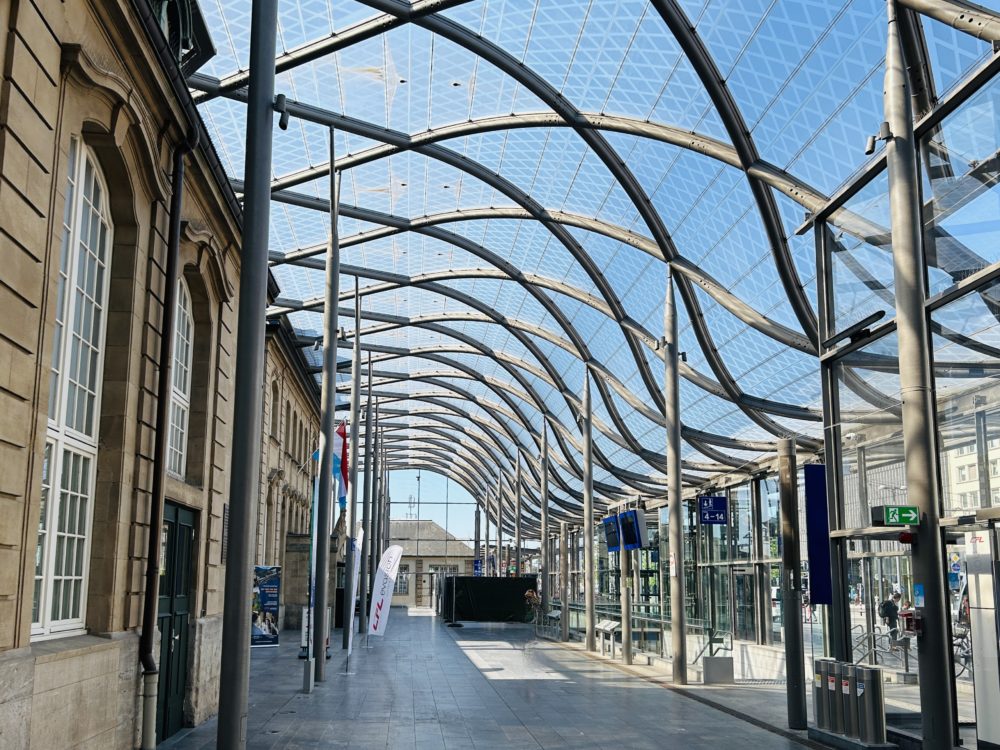Luxembourg Central Station, known locally as Gare Lëtzebuerg was originally opened on October 4, 1859. The station was initially constructed entirely from timber. This wooden structure was replaced between 1907 and 1913 by the current building, designed by German architects Rüdell, Jüsgen, and Scheuffel in the Moselle Baroque Revival style. This style, characterised by its ornate details and grandeur, is a hallmark of Luxembourg’s major public buildings.
The station’s imposing clock tower and the facade at Place de la Gare are iconic features that have welcomed travellers for over a century. The location of the station on the south bank of the Pétrusse River was strategic, initially serving as a fortress of the German Confederation. The construction of the Passerelle viaduct in 1861 connected the station to the city proper, facilitating the expansion of Luxembourg City around this crucial transportation hub.
In recent years, Luxembourg Central Station has undergone significant modernisation to meet contemporary needs while preserving its historic charm. A notable addition is the new entrance hall, completed as part of a six-year renovation project that began in 2006. This modern extension features an impressive glass roofing that floods the hall with natural light, creating a welcoming and airy atmosphere for travellers. The renovation also included new ticketing facilities, expanded platforms, and improved accessibility features, ensuring that the station remains a vital part of Luxembourg’s transportation network.
#LuxembourgCentralStation #HistoricArchitecture #ModernDesign #TravelLuxembourg #RailwayHeritage













